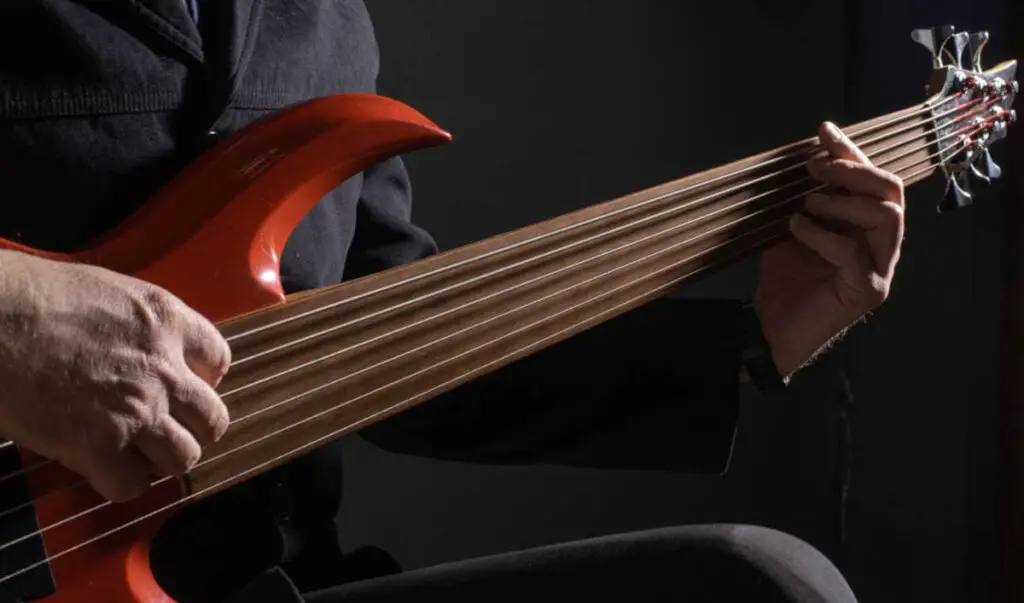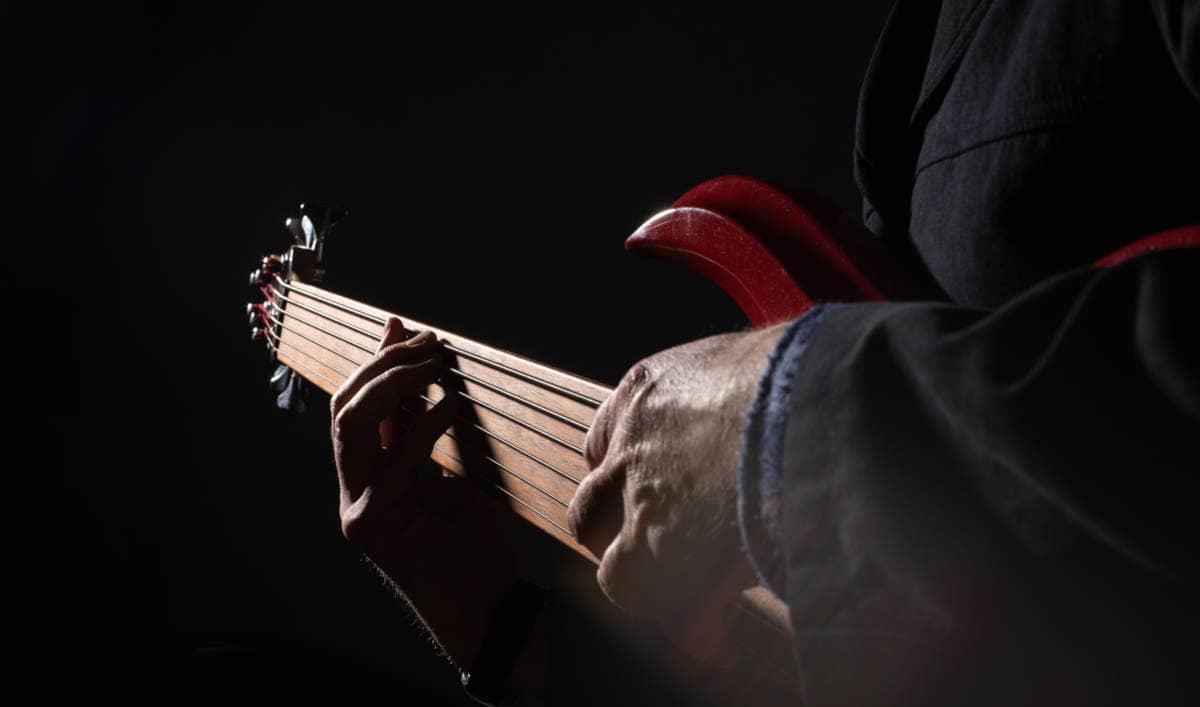Like most bassists, I have always gravitated towards the 4-string. I started off on a cheap 4-string and have mainly stuck to 4-strings for the 14 years I have been playing bass. Still, I have found 6-strings incredibly fun to play. I have to admit that they let you do a lot that 4-strings are incapable of, but is a 6-string bass worth it?
6-string basses are worth it if you want the lower range of a 5-string as well as the added melodic flexibility that the high C string offers. A 6-string gives you a lot of options in how you voice chords and is thus worth it if you find yourself limited by the 4-string.
Whether you should purchase a 6-string thus depends largely on what you want to accomplish as a bassist. Are you looking to utilize chords in your playing? Do you want a deeper sound than what the open E-string offers on the 4-string? Are you looking to play solo, or in a band setting?
For some, the 6-string will be worth it, for others, it won’t. Thus, I’m going to tell you all you need to know in order to determine whether the 6-string is worth it for you or not.
Should I get a 6 string bass?
You should only get a 6 string bass if you have tried one out first. The thicker neck and narrower space between strings will feel a lot different than a 4-string and the usefulness of the 2 extra is individual to each bassist.
While a 4-string bass is tuned EADG, a 6-string is typically tuned BEADGC. This means that you have one lower string, and one higher string than a 4-string bass.
Some 6-string basses are tuned EADGBE, just like a guitar. Basses that are intended to be tuned this way are commonly labeled as Bass VI`s. However, it`s possible to tune a 6-string bass like a guitar, even if it isn`t marketed as a Bass VI.
This in turn means that the neck is thicker and that the strings are closer to one another on a 6-string. I was so used to playing a 4-string, that the first time I tried a 6-string it thus felt overwhelming and took some time to get used to.
Feeling comfortable with your instrument is essential and often overlooked. Thus, you should try out several 6-string basses to find out whether it feels comfortable to play one or not before considering purchasing one.
Music stores are happy to let you try out their instruments for free. Smaller stores tend to have a limited selection of 6-string basses, though.
As for the cost, you can get an entry-level 6-string for about $400-$500. These prices will quickly shoot up if you are looking for a premium bass. Thus, if you can afford one and you feel that you will make more use of it than a 4-string you should definitely get one.

What is the point of a 6 string bass?
The point of a 6-string bass is to have the deep range of a 5-string bass while simultaneously having a higher range. By having a high C string in addition to the low B, 6-string basses also allow for a heavier, more melodic, and flexible playstyle.
This is why 6-strings are common in genres like progressive metal where bassists often play heavy tuned-down riffs as well as melodies. Listen to John Myung of Dream Theater for a great example of how to use the 6-string to its full capacity in this type of genre.
The 6-string has also been utilized in Rock n` Roll by Phil Lesh of The Grateful Dead and in Jazz by Anthony Jackson.
By having a high C string in addition to the low B, 6-string basses also allow for a heavier, more melodic, and flexible playstyle.
If you want to cover any of these artists or play a similar type of music, a 6-string is thus a natural choice.
For a more visual explanation of how the 6-string can be used, watch the video below. Scott of Scott`s bass lessons sits down with Oteil Burbridge, an amazing 6-string player to talk about his playstyle on the 6-string:
Is it hard to play 6-string bass?
Playing the 6-string bass is similar to playing the 4-string bass. The 2 extra strings give you more possibilities, rather than make playing more difficult. Due to the thicker neck and narrower space between strings, some find it more difficult to keep strings muted which in turn makes playing more difficult.
A common misconception about the 6-string is that it is a complicated instrument. In reality, you could just play a 6-string like a 4-string and do nothing wrong. The extra strings are tools that you can utilize when appropriate, rather than something you have to make use of at all times.
Related reading: Why does the common bass have 4-strings, as opposed to 6?
Compared to the 4-string, you will need to be more precise with how you place your fingers on a 6-string. This is because the strings are closer to one another on a 6-string than on a 4-string. Thus, depending on how you play, you might find that unwanted strings end up ringing if you play the 6-string exactly like a 4-string.
This might take some getting used to. It’s not necessarily difficult, but readjusting your muscle memory will not come overnight.
Can you play a 6-string bass like a guitar?
A 6-string bass can be played like a guitar. Bass VI`s are 6-string basses that are tuned the same way as a guitar, but one octave down. However, due to the deeper tuning of the bass, chords will sound more muffled and boomy than on the guitar.
A 6-string bass can thus be played like a guitar, but it is a poor choice to use it as a replacement for the guitar in a band setting. The bass will end up in a frequency spectrum that is between where the bass and guitar usually play, making the overall sound of the band awkward.
For solo play, jamming, and composing, the 6-string can sound great when played more like a guitar. Chords will sound muddier the lower you play on the neck, but when played above the 12th fret, chords will be clearer and in the same range as a guitar.
Note that most 6-strings are tuned BEADGC, and should not be tuned like bass VI`s. If you are looking to play bass like a guitar, look into the Fender VI or Squier VI.
Conclusion
Entry-level 6-string basses are not too expensive and give you a lot of freedom in the way you play.
When deciding whether a 6-string is worth it for you or not, consider the following:
- Style. If you are a melodic bassist a 6-string could help out your playing. If you prefer holding a simple deep groove, you might not make as much use of it.
- Genre. In classic rock, you will rarely need the deeper or higher range of a 6-string. In progressive metal, you will usually need at least a 5-string and a 6-string is often an even better choice.
- Feel. How does the thicker neck and the closer strings feel to you? Being comfortable with your instrument is paramount, so try out a couple of 6-strings before you even consider getting one.
A 6-string might give you all the flexibility you need in your playing, or it might be redundant to switch to it from the 4-string. By considering the points above you will be able to determine whether getting a 6-string is worth it or not to you as a bassist.

